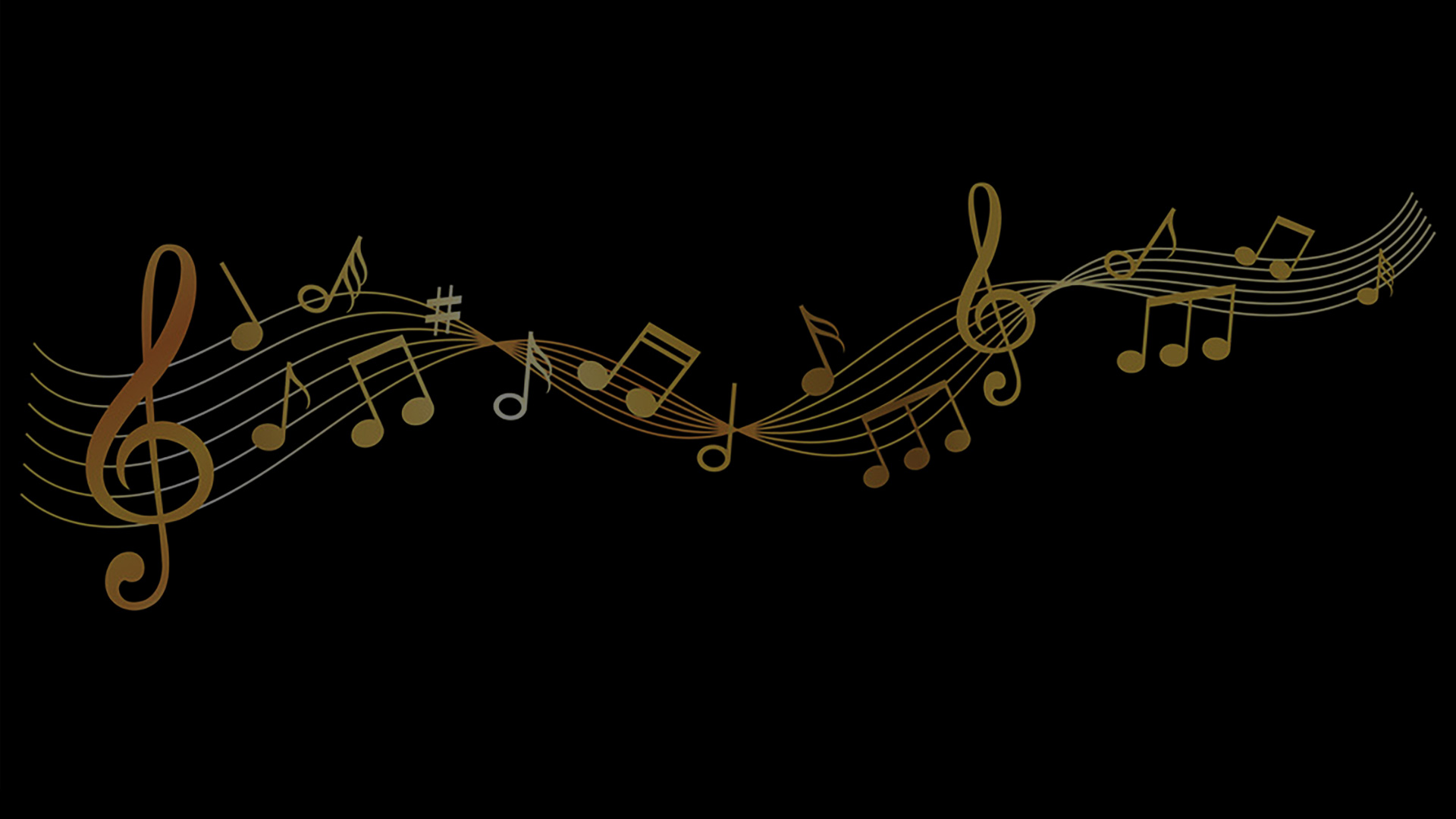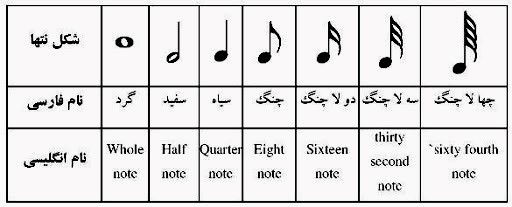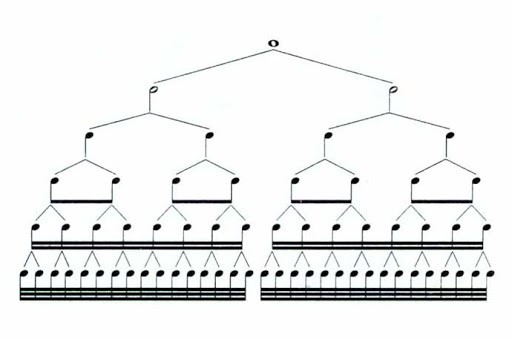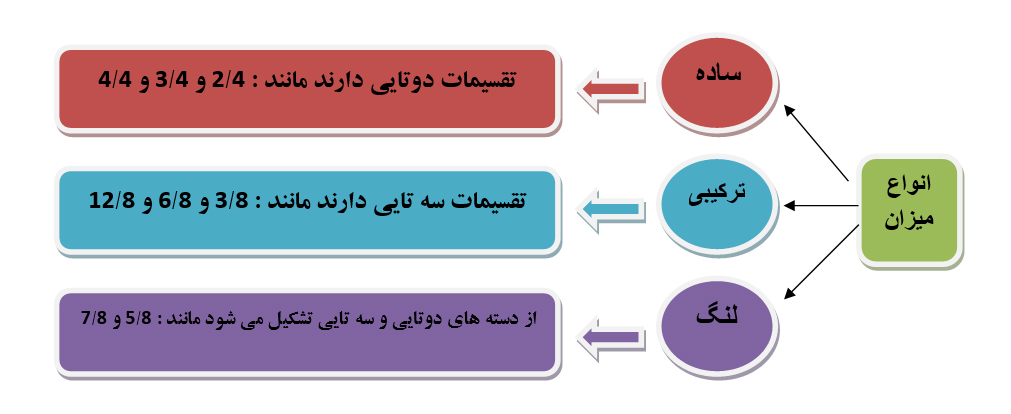
A reflection on the theoretical foundations of Meter and rhythm
Introduction
Our first understanding and perception of rhythm is formed by hearing our mother’s heartbeat in the womb and after birth our heart becomes a rhythmic element in our being that always beats and stays with us until the end of life. Nature is full of rhythmic elements such as the sound of rain, the cycle of night and day and the rotation of seasons that are constantly repeating. The first human understood the external manifestation of rhythm when moving in a regular collective way by hearing the sound of their feet and then tried to produce that sound by making percussion They invented the primitive examples of percussion instruments by hitting a hollow tree or pulling the skins of hunted animals on various surfaces and used them in their gatherings and special rituals and sometimes considered them as a heavenly phenomenon and belonging to the gods.
Explanation and analysis of the concept of rhythm
In this article we are looking for an explanation and analysis of the concept of rhythm in music, which is a very important and essential topic for musicians of all instruments, especially the percussion branch. In the following, scientific and precise definitions of rhythm from the perspective of music theory experts are presented for those interested in this field and we hope to create a more accurate view and understanding of the nature of rhythm and meter in musicians.
Definitions of rhythm:
Music is the art of expressing human emotions through sounds, the most important elements of which are melody and rhythm. Rhythm is the first main factor in music that gives it life and movement and is the expression of various sounds and silences in a sound set that moves on equal beats or quantum time. So in other words, the organized appearance of various sounds and silences, in terms of different time extensions and also regular and irregular emphases, among equal sounds with one extension, creates rhythm. These extensions are shown by stretch marks in music. In music, like cell divisions, each large note is divided into two smaller notes, which ultimately results in 64 quarter notes from a round note and forms a tree or cluster diagram.

Meter
Meter is the periodic repetition of a string of various durations. These durations can be composed of sound (regardless of their pitch) or silence, which in their simple form have a periodic cycle in the space of one measure, and sometimes more than one measure. (Fundamental Theory of Music, Parviz Mansouri, Karnameh Publications 2011)
Rhythm
Rhythm, in the most general sense, is the regular flow of music in time. Musical time, in terms of its infinite variety, is similar to biological (biological) time. Musical time can also flow with different speeds and intensities. Despite all this, there is a fundamental difference between music and life. The composer can control the passage of time in music, but in real life, time escapes our grasp. Letting go in musical time, when it resonates with our feelings and mood, is pleasant for us. We also enjoy letting the rhythm of music move our bodies in dance. (Understanding and Receiving Music, Roger Kamien, translated by S. Hossein Yassini, Cheshmeh Publication 1380)
Rhythm in music has elements and components that are very essential and important to learn how to write rhythm. It is natural that the common way of writing rhythm goes back to Europe and classical music. This is while in the East and Africa, the transmission of rhythm has been more based on oral teaching and ancient civilizations such as Iran and India have had their own specific system of syllabic reading. Next, we will examine other important definitions in understanding rhythm.

The concept of beat or pulse (Beat):
It is the units of time that listeners usually accompany by moving their bodies or tapping or stomping in rhythm and harmony while listening to music, and also the conductor indicates them with hand movements in space. Beat is the unit of measurement of rhythmic beats in music. For example, we have often heard that the rhythm of this piece is two-beat or three-beat, or the repetition of elements such as Afail that creates the prosodic weight in Persian poetry.
Tempo:
The speed or slowness of the rhythm performance is called tempo, which can be calculated by a metronome. If we play each black note on the metronome at a speed of 60 BPM, each black beat will be equal to one second. The speed in music is indicated by Italian terms that are shown in the table below.

Table number two. Names of terms related to speed. Source: Negarande 1399
Accent:
Music is understandable only if it has emphasis in any way. It is not possible for a song to have no emphasis and still be understood as a single song. The sounds of a rhythm are also usually divided into emphasized and unemphasized forms and are often regular in periods. Emphasis is the main factor in shaping the meter or musical phrases.
Definition of meter:
One of the regular temporal patterns in music is the metric pattern and meter in music is the groups of two, three and four sounds that usually have emphasis on the first sound.
Meter in music (Bar) :
Meter refers to musical phrases and meters are separated from each other by a meter line, which is a vertical line across the staff lines, and usually have the same time. Each of the meters has a number of beats and the most common meters are two-beat, three-beat, four-beat and six-beat. The meters in today’s music are simple meters, compound meters and irregular or mixed meters. Simple meters are naturally the meters that each beat of them can be divided into 2, 4 and 8 equal parts. At the same time, every beat in compound meters is divisible into 3, 6 and 12 equal parts. Irregular meters are formed by the combination or concatenation of two or more meters with unequal beats, such as a 5-beat meter that is formed by the combination of a 2-beat meter and a 3-beat meter.

carrier line:
The baseline in musical notation is called the carrier line, which in most percussion instruments determines the place of playing the beat and at the same time indicates the low and high pitch of the sound. In melodic instruments, a five-line carrier is used to show musical notes, but in percussion instruments, a three-line or single-line carrier is used to show beats and movements.
Time Signature:
At the beginning of each meter, like a conventional fraction, two numbers that are placed vertically on top of each other are written, which indicate the temporal events, identity and rhythmic structure in the meter. This number is called the meter indicator or some call it the meter fraction, which each of these numbers has a specific meaning and refers to an important point. The numerator of the fraction represents the number of beat units in the meter, which can be from two upwards. The lower number or the denominator of the fraction of the graph is neti (relative to the round), which is the unit of multiplication and is usually 2, 4, 8 or 16.
Conclusion :
In the above definitions, we briefly examine rhythm and its components from a theoretical point of view, but it is natural that it is better to study and we also need practical exercises under the supervision of a music teacher.
